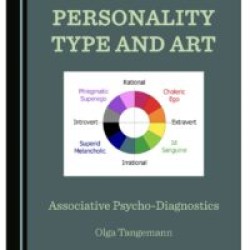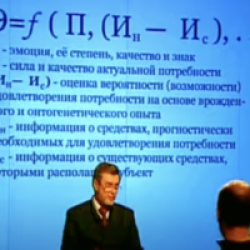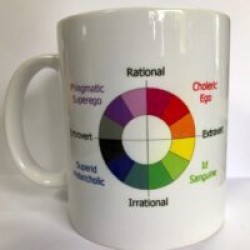Key: Du - Duality; Ac - Activation; Sd - Semi-duality; Mg - Mirage; Mr - Mirror; Id - Identity; Cp - Cooperation; Cg - Congenerity; QI - Quasi-Identity; Ex - Extinguishment; Se - Super-ego; Cf - Conflict; Rq+ - Requester; Rq- - Request recipient; Sv+ - Supervisor; Sv- - Supervisee
|
Table of intertype relations |
||||||||||||||||
|
ILE |
SEI |
ESE |
LII |
EIE |
LSI |
SLE |
IEI |
SEE |
ILI |
LIE |
ESI |
LSE |
EII |
IEE |
SLI |
|
|
ILE |
Id | Du | Ac | Mr | Rq+ | Sv+ | Cp | Mg | Se | Ex | QI | Cf | Rq- | Sv- | Cg | Sd |
|
SEI |
Du | Id | Mr | Ac | Sv+ | Rq+ | Mg | Cp | Ex | Se | Cf | QI | Sv- | Rq- | Sd | Cg |
|
ESE |
Ac | Mr | Id | Du | Cg | Sd | Rq- | Sv- | QI | Cf | Se | Ex | Cp | Mg | Rq+ | Sv+ |
|
LII |
Mr | Ac | Du | Id | Sd | Cg | Sv- | Rq- | Cf | QI | Ex | Se | Mg | Cp | Sv+ | Rq+ |
|
EIE |
Rq- | Sv- | Cg | Sd | Id | Du | Ac | Mr | Rq+ | Sv+ | Cp | Mg | Se | Ex | QI | Cf |
|
LSI |
Sv- | Rq- | Sd | Cg | Du | Id | Mr | Ac | Sv+ | Rq+ | Mg | Cp | Ex | Se | Cf | QI |
|
SLE |
Cp | Mg | Rq+ | Sv+ | Ac | Mr | Id | Du | Cg | Sd | Rq- | Sv- | QI | Cf | Se | Ex |
|
IEI |
Mg | Cp | Sv+ | Rq+ | Mr | Ac | Du | Id | Sd | Cg | Sv- | Rq- | Cf | QI | Ex | Se |
|
SEE |
Se | Ex | QI | Cf | Rq- | Sv- | Cg | Sd | Id | Du | Ac | Mr | Rq+ | Sv+ | Cp | Mg |
|
ILI |
Ex | Se | Cf | QI | Sv- | Rq- | Sd | Cg | Du | Id | Mr | Ac | Sv+ | Rq+ | Mg | Cp |
|
LIE |
QI | Cf | Se | Ex | Cp | Mg | Rq+ | Sv+ | Ac | Mr | Id | Du | Cg | Sd | Rq- | Sv- |
|
ESI |
Cf | QI | Ex | Se | Mg | Cp | Sv+ | Rq+ | Mr | Ac | Du | Id | Sd | Cg | Sv- | Rq- |
|
LSE |
Rq+ | Sv+ | Cp | Mg | Se | Ex | QI | Cf | Rq- | Sv- | Cg | Sd | Id | Du | Ac | Mr |
|
EII |
Sv+ | Rq+ | Mg | Cp | Ex | Se | Cf | QI | Sv- | Rq- | Sd | Cg | Du | Id | Mr | Ac |
|
IEE |
Cg | Sd | Rq- | Sv- | QI | Cf | Se | Ex | Cp | Mg | Rq+ | Sv+ | Ac | Mr | Id | Du |
|
SLI |
Sd | Cg | Sv- | Rq- | Cf | QI | Ex | Se | Mg | Cp | Sv+ | Rq+ | Mr | Ac | Du | Id |
Duality interaction is generally rewarding and satisfying for both parties, providing inspiration and support. Duality is a central theme of the philosophy of socionics study: Augusta often stated her position that a person who is estranged from contact with a dual partner must cope by unnaturally distorting their personality, a phenomenon called “type masking”. Relationships with conflictor types are cited as particularly troublesome: it is not uncommon for a person in a close relationship with their conflictor to develop an acute neurotic condition.
Socionics postulates that the way information is communicated between different types results in different interaction styles, called intertype relations. Each intertype relation has its bad and good qualities, though duality is generally considered to be the most psychologically comfortable as a long-term relationship. In total there are 16 relationship roles for each type (14 when not counting the split roles in the supervision and benefit relationship). All relations beside Request and Supervision are symmetric.
Blocks and functions of the model A
You learned previously about the general B-model (Butterfly) and the functions which are named by the name of the blocks of this model (Ego, Id, Superid and Superego). In the model A there are the same psychic blocks, structured in the same way but the order of the functions in blocks will be different for each of the 16 types. For example, Ego functions for the B-model will be always the same – Fe and Te. For each of the 16 types there will be different functions in the Ego block of model A on the positions of programm and creative functions. In this article the reference is made only to the blocks of model A:
Ego: programme & creative
Superego: vulnerable & role
Id: restricting & background
Superid: mobilizing & suggestive
Identity. Relations of Identity describe relations between two individuals of the same type. Often, both partners will perceive similar situations and problems, and will take similar actions. Partners usually understand the motivations behind the other’s actions. A relationship between identity partners is characterized by mutual understanding, self-development, and learning. Each is interested in the other’s ideas, and sees their value, but such relations quickly become exhausted and boring since there is nothing more to discuss once informational potentials reach the level.
Duality. Duality is a fundamental concept in Socionics. Dual relations are characterized by mutual benefit and support, and are generally viewed as optimal for friendship, intimacy, and marriage (though sociotype is not the only factor influencing this). In dual relations, the leading function of one partner is the suggestive function of the other, and the creative function of one partner is the mobilizing function of the other. Thus, the ego functions of the Model A (the strongest and most socialized) of each correspond to the super-id functions of the other (the area where the person needs and expects assistance). Likewise, the super-ego block of one corresponds to the id of the other. In this relation, just 1 of 4 Jungian dichotomies is shared—rationality/irrationality.
Hamlet – EIE – ENFJ Maxim Gorky – LSI – ISTJ
Programme – Fe Fi – Restricting Programme – Ti Te – Restricting
Creative – Ni Ne – Background Creative – Se Si – Background
Vulnerable – Si Se – Mobilizing Vulnerable – Ne Ni – Mobilizing
Role – Te Ti – Suggestive Role – Fi Fe – Suggestive
Semi-duality. Relations of semi-duality are similar to relations of duality. Semi-duality occurs between partners who lead (by leading function) each other’s dual-seeking (suggestive) functions but lack each other’s creative functions (to assist their mobilizing functions). As a result, both partners often perceive elements of duality from the relationship but feel the other partner is misplacing the correct emphasis; as semi-duals will be able to help their partners with their dual seeking functions but both have the least confidence in the same area of the psyche (thinking, feeling, sensing, or intuition). Relationships of semi-duality can become very close for moderate periods of time until correspondence is broken indefinitely. These relationships often begin, or rekindle because of mutual interests or friends held in common.
Hamlet – EIE – ENFJ Maximilien Robespierre – LII – INTJ
Fe Fi Ti Te
Ni Ne Ne Ni
Si Se Se Si
Te Ti Fi Fe
Activation. Activation relations occur between two members who share either introversion or extraversion. These relations resemble duality since the super-id functions are both present in the ego functions of the other partner. However, these relations are somewhat less fulfilling than dual relations. Each partner’s dominant function is the others mobilizing function. Activation relationships are often romantic if both partners find each other attractive. These relationships are often very easy to start, as both partners share either extraversion or introversion. Introvert activation relationships appear reserved, while extravert activation relationships appear hectic.
Hamlet – EIE – ENFJ Georgy Zhukov – SLE – ESTP
Fe Fi Se Si
Ni Ne Ti Te
Si Se Fi Fe
Te Ti Ne Ni
Mirror. Mirror relations occur between types who share the same ego functions, yet place different emphases on them; the dominant function of one partner is the creative function of the other. Mirror relations are characterized by similar actions and motivations between partners, and mutual understanding. Interactions usually result in a drawn out dialogue, as each partner seems to keep opening up avenues of thought which the other needs to now clarify verbally. An important source of dissension between mirror types is the opposing between Ej and Ip, or between Ep and Ij. Ejs find the passive, unstable Ip behavior to be a severe hindrance in getting things done, while Ips find the restless and proactive actions of Ej types paranoid and stifling. Similarly, Ep types find Ij types to be somewhat dull and boring, while Ij types see Ep types as wildly unpredictable and impetuous.
Hamlet – EIE – ENFJ Sergei Yesenin – IEI – INFP
Fe Fi Ni Ne
Ni Ne Fe Fi
Si Se Te Ti
Te Ti Si Se
Mirage. Mirage relations occur between partners whose creative functions are the other partners’ mobilizing functions, but whose dual seeking (suggestive) functions are the other partners’ role functions. Relationships of mirage often become quite close and are easy to begin because both individuals are able to communicate effectively with one another because partners share a preference for thinking, feeling, sensing, or intuiting.
Hamlet – EIE – ENFJ Theodore Dreiser – ESI – ISFJ
Fe Fi Fi Fe
Ni Ne Se Si
Si Se Ne Ni
Te Ti Ti Te
Quasi-identity. Relations of Quasi-identity are characterized by mutual misunderstanding. One partner’s programme functions (model A) are the other partner’s background functions. As quasi-identicals have opposite functions, they will often have similar interests (id block and ego blocks contain the same functions) and become involved in similar activities, but they rarely understand each other’s motivations or ideas.
Interestingly, Quasi-Identity partners often identify themselves as being very different from the partner. Outside observers often have trouble seeing the differences that the individual sees between himself and the partner. At the same time Quasi-Identity relations are most productive to assess a new idea and find its weak points since quasi-identicals have an expert view from the other side.
Hamlet – EIE – ENFJ Aldous Huxley – IEE – ENFP
Fe Fi Ne Ni
Ni Ne Fi Fe
Si Se Ti Te
Te Ti Se Si
Cooperation. Cooperation relations occur between partners who have the same creative function but differing dominant functions. As a result, partners may often perform similar activities or have similar fields of interest, but often do not understand each other’s internal motivations. Partners will often approach their related fields with vastly different agendas and will generate conflict when working as a team. These relations become formal and business like as to avoid open debate and conflict.
Hamlet – EIE – ENFJ Jack London – LIE – ENTJ
Fe Fi Te Ti
Ni Ne Ni Ne
Si Se Si Se
Te Ti Fe Fi
Congenerity. Congenerity relations occur between types who share the same dominant function but possess different creative functions. Partners often see each other as interesting people and are often able to see each other’s motivations, but tailor their actions towards areas where the other partner is unskilled or uninterested, as the creative function for one partner is the place of least resistance of the other. Congenerity relationships are often similar to mirror relationships where ideas are communicated through drawn out dialog. These relationships are easy to begin because both partners share a similar type of intelligence, and are able to communicate it easily to one another.
Hamlet – EIE – ENFJ Victor Hugo -ESE- ESFJ
Fe Fi Fe Fi
Ni Ne Si Se
Si Se Ni Ne
Te Ti Te Ti
Extinguishment. This relations occur between types confident in the same area of the psyche but who place different emphases on each function. They restrict each other dominant fucntions. This relations often consist of similar lifestyles but differing thought processes. Partners will have similar interests and areas of expertise, and have little trouble communicating with one another. Still, misunderstanding and conflict arise when partners come to vastly different conclusions about specific ideas or events.
Hamlet – EIE – ENFJ Fyodor Dostoyevsky – EII – INFJ
Fe Fi Fi Fe
Ni Ne Ne Ni
Si Se Se Si
Te Ti Ti Te
Super-ego. Super-ego relations occur between types whose ego functions are the other partners’ super-ego functions. Super-ego relations are generally characterized by differing values, discomfort, and mutual misunderstanding. Partners in a super-ego relationship are often fascinated or terrified by their partners lack of similarity to themselves. Super-ego partners are constantly aware of their total opposition in values to the partner. Outside observers are often similarly aware.
Hamlet – EIE – ENFJ Max Otto von Stierlitz -LSE – ESTJ
Fe Fi Te Ti
Ni Ne Si Se
Si Se Ni Ne
Te Ti Fe Fi
Conflict. Relations of Conflict are, unsurprisingly, characterized by constantly escalating conflict. Conflictors are the types with the most dissimilar values (dominant function of one is the other parnter’s vulneralbe function). They rarely understand anything regarding each other’s motivations or lifestyles. Conflictors may take for granted truths that their partners will dismiss as absurd. Sometimes they understand each other so little that the conflict is not well understood, but prevails under the surface, discomfiting both partners to no end. Conflictors usually are rather interesting for each other, but also rather tiresome.
Hamlet – EIE – ENFJ Jean Gabin – SLI – ISTP
Programme – Fe Fi – Restricting Programme – Si Se – Restricting
Creative – Ni Ne – Background Creative – Te Ti – Background
Vulnerable – Si Se – Mobilizing Vulnerable – Fe Fi – Mobilizing
Role – Te Ti – Suggestive Role – Ni Ne – Suggestive
Request and Supervision relations are asymmetric and have 2 roles: Request – Requester and Request recipient, Supervision – Supervisor and Supervisee. Each cell in the table shows who the type in the left column is to the type in the top row. Request recipient, Supervision – Supervisor and Supervisee. Each cell in the table shows who the type in the left column is to the type in the top row.
Request. Relations of request are asymmetrical relations; one type requests another. The request recipient’s dual seeking function is the requester’s creative function, and as a result the request recipient often takes an interest in the requester. However, the requester’s dual seeking function is the request recipient’s place of least resistance, and the requester finds the request recipient a highly uninteresting person. Relations of request frequently end with the departure of the requester.
Don Quixote Hamlet Napoleon
Ne Ni Fe Fi Se Si
Ti Te Ni Ne Fi Fe
Fi Fe Si Se Ti Te
Se Si Te Ti Ne Ni
Supervision. Relations of supervision are asymmetrical; one type supervises another. Relations of supervision are characterized by the supervisor’s attempt to introduce his base function into the supervisee’s life. The supervisor often perceives the supervisee as an interesting person and understands the supervisee’s lifestyle, since the supervisor’s creative function is the supervisee’s base function. Nonetheless, the supervisee is often on the defensive since the supervisor’s base function is the supervisee’s point of least resistance (the function most vulnerable to criticism). The supervisee often perceives the supervisor to be the evil incarnate, while the bewildered supervisor wonders why the supervisee reacts so poorly to his objective and benevolent assistance.
Alexandre Dumas Hamlet Honoré de Balza
Si Se Fe Fi Ni Ne
Fe Fi Ni Ne Te Ti
Te Ti Si Se Fe Fi
Ni Ne Te Ti Si Se












1 Response
[…] говорим о том, что у данного человека имеется подтип конфликтера. Теория способна объяснить не только механизм […]